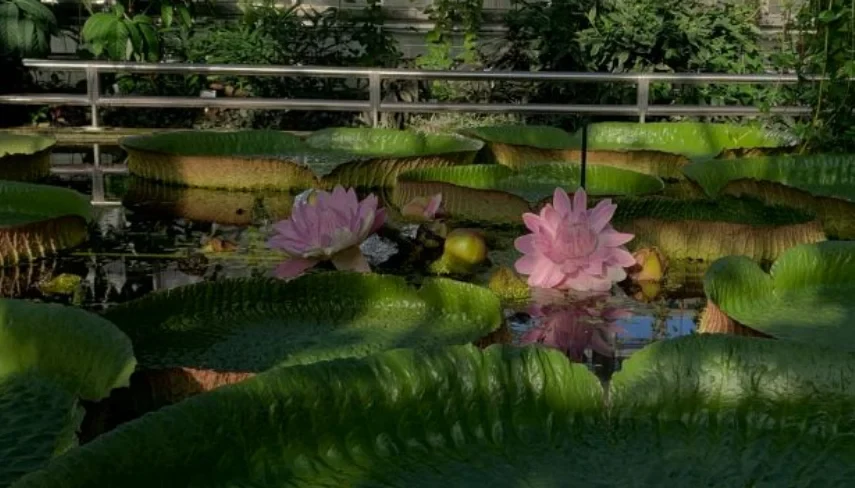Victoria cruziana
This page provides an overview of our research on Victoria cruziana. Many results have been published in Nowak et al., 2025.

© https://doi.org/10.1101/2024.06.15.599162
Victoria cruziana is a giant water lily that belongs to the family Nymphaeaceae. It is considered a perennial plant and grows under tropical conditions.

© https://doi.org/10.1101/2024.06.15.599162
What’s impressive is that the leaves of this giant water lily can support several kilograms on the water’s surface.

© https://doi.org/10.1101/2024.06.15.599162
But its true secret lies in the color change of its flower from white to pink. This transformation takes place at night, with the flower initially blooming white and then turning pink the following night. We are investigating the genetic mechanism behind this color change using long-read sequencing and RNA-seq analyses. Additionally, we are exploring the ecological context of this nocturnal color change and what triggers it.

© https://doi.org/10.1101/2024.06.15.599162
Our results so far suggest that genes involved in flavonoid biosynthesis are expressed at different levels in the flowers. We also observe varying activities in the associated transcription factors of anthocyanin biosynthesis, which are likely responsible for the pigmentation of the Victoria cruziana flower.

© https://doi.org/10.1101/2024.06.15.599162
To identify an ecological significance for the color change from white to pink, we examined factors such as flower development, potential pollinators, and light exposure. All three factors are known to trigger color changes in various plants. In Victoria cruziana, we were able to identify light exposure as a relevant influence on flower pigmentation by selectively shielding parts of the plant from sunlight.

